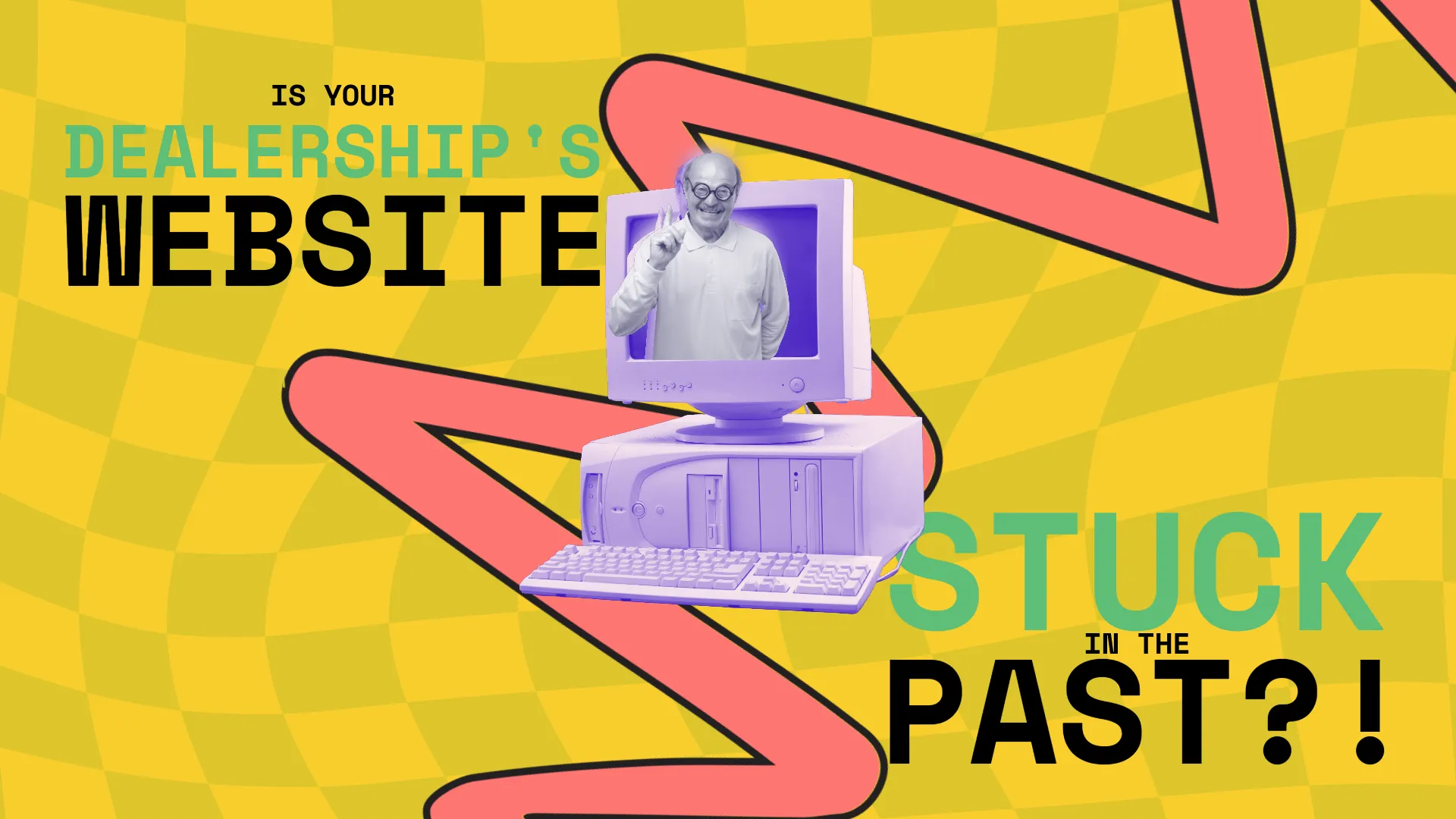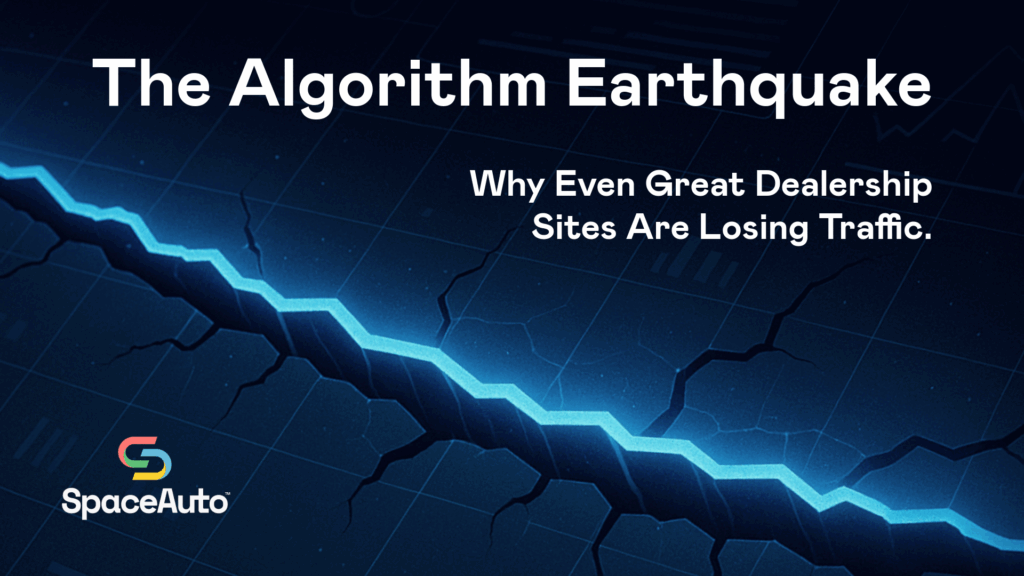
05/13/2025
What Car Buyers Expect from Dealership Websites in 2025
In 2025, car buyers expect dealership websites to function like a trustworthy, well-informed salesperson online.
Modern shoppers do most of their car research digitally – spending upwards of 11 hours gathering information on models, prices, and deals before ever setting foot in a showroom. By the time they reach a dealership, they are largely prepared to buy. In fact, today’s buyers visit only about 1.4 dealerships on average before purchasing (down from ~4.5 a decade ago). This means your website often makes the first and only impression, and it needs to meet customer expectations or you risk losing the sale before the customer even walks in.
The problem? Many dealership websites haven’t significantly evolved in over a decade. Too often, dealers take a “set it and forget it” approach with their sites, leaving clunky layouts and outdated tools in place. As one industry veteran observes, “dealership websites have a reputation for being generic and outdated”, often relying on cookie-cutter templates that fail to engage modern consumers. If your site still looks and works like it’s 2010, it’s likely frustrating users and pushing potential buyers away. In an era when buyers can shop online for almost anything with ease, they expect a seamless digital car-shopping experience. Below, we break down exactly what today’s car shoppers want from your site and how you can improve your digital retail experience to deliver on those expectations.
What Do Car Buyers Expect from Dealership Websites in 2025?
Car buyers in 2025 have high expectations for dealership websites. After years of using e-commerce platforms and third-party car shopping sites, they demand the same level of convenience, information, and transparency from dealer sites. Here’s what modern car shoppers typically expect:
- Up-to-Date, Easy-to-Browse Inventory: Shoppers want to quickly find the right vehicle that fits their needs. This means your website should have an intuitive inventory search with filters (make, model, price, features) and real-time availability. If a car isn’t on your lot, it should be clearly marked (or not shown at all). A user-friendly inventory that’s kept current is crucial – availability is a top concern for car shoppers, so if they can’t find the model or trim they want on your site, they’ll move on.
- Transparent Pricing and Real Offers: Today’s buyers expect honest, upfront pricing online. They’ve researched market prices and want to see actual prices for vehicles, including any discounts or incentives, without needing to haggle in person. Posting only “Call for price” or MSRP without context won’t cut it. Include clear pricing breakdowns, lease/finance payment estimates, and online financing tools (like loan calculators or pre-approval forms) so customers can gauge affordability. When pricing info is transparent and comprehensive, it builds trust and keeps shoppers engaged.
- Trust Signals and Social Proof: A great dealership website should make visitors feel confident about doing business with you. Your site should prominently display trust signals – for example, customer reviews and ratings, testimonials, industry awards, or years in business. Remember, potential buyers will be scanning your website for signs that your dealership is trustworthy. Integrating real customer feedback (from Google, DealerRater, etc.) and highlighting your store’s achievements or community involvement can reassure shoppers that you are reputable. This credibility is part of E.E.A.T (Experience, Expertise, Authoritativeness, Trustworthiness), and it helps turn browsers into buyers.
- Rich Information & Helpful Tools: Beyond inventory and price, customers expect the website to answer their questions just like a salesperson would. Detailed vehicle descriptions, lots of photos and videos, specs, and comparisons help online researchers. Helpful tools like trade-in value estimators, side-by-side model comparisons, and online chat for quick answers add to a positive experience. Over 90% of car buyers do extensive online research before visiting a dealership, so your site should act as an information hub. The more useful info you provide (e.g. car history for used vehicles, financing FAQs, purchase process steps), the more you position your dealership as an expert and a one-stop resource.
In short, car buyers in 2025 expect a fast, informative, and transparent online experience from dealership websites. They want to effortlessly find a suitable car, understand the deal they’re getting, and feel confident about the dealer – all without needing to visit multiple stores. Meeting these expectations is the first step to winning their business.
How Can You Improve the Digital Retail Experience for Car Shoppers?
If your dealership’s website is not delivering what customers expect, it’s time to upgrade your digital retail experience. Improving your site isn’t just an IT project – it’s a sales strategy. Here are concrete ways to align your website with modern buyer expectations and turn it into a high-converting digital showroom:
1. Address the Top Reasons Shoppers Don’t Buy: Studies show that when customers leave a dealership without buying, it’s often due to one of three issues: the vehicle wasn’t right, the financing didn’t work, or the price/offer wasn’t attractive. Tackle these upfront on your website:
• Inventory Fit – Offer a wide selection online and make it easy to filter/search. Include similar alternatives for any vehicle page (e.g. “People who viewed this X also liked Y”) to keep shoppers from feeling you lack options. If you don’t have a certain model, allow users to reserve or order it, so you don’t lose them entirely.
• Financing – Integrate digital retail tools that let shoppers start the financing process online. This could be a payment calculator, a credit pre-approval form, or even full online checkout for the car. When buyers can explore financing or lease options from home, they’re less likely to be surprised or disappointed later. It also shows that you’re transparent and helpful about budgeting.
• Pricing/Offer – Make sure the deals on your site are compelling and real. List all relevant discounts, show any special offers or trade-in bonuses, and be honest about pricing (including doc fees or add-ons). If a user configures a deal (price + financing terms), let them save or print it as a guaranteed offer to bring in. By presenting a fair, up-front deal online, you prevent the feeling of a “poor offer” that might drive shoppers away.
2. Implement Must-Have Digital Retail Features: Certain website features are now essential for a modern car-shopping experience. Ensure your site includes:
- Fast, Mobile-Friendly Design: Many shoppers will be on mobile devices. A clean design with quick load times and simple navigation is critical. (A slow, cluttered site will lose impatient users instantly.)
- Live Inventory with Filters: As mentioned, have a searchable inventory with real-time updates. Users should be able to easily filter by key criteria and see what’s available now. Include VIN-specific details, and mark units that are incoming or sold to manage expectations.
- Online Buying Tools: Allow customers to do more of the process online if they choose. This can include credit applications, trade-in appraisals, scheduling a test drive or appointment, and even home delivery options if feasible. The more steps a buyer can complete digitally at their convenience, the more seamless their experience.
- Clear Calls-to-Action: Every page should guide the visitor on next steps – e.g., “Schedule a Test Drive,” “Calculate Payment,” “Apply for Financing.” Make these buttons prominent. A well-designed site guides users just like a salesperson would, leading them down the funnel.
- Security and Privacy Assurances: As part of building trust, visibly show that your forms and data are secure (SSL certificates, privacy policy links) especially on finance forms. Trust badges or certifications can reduce hesitation when a shopper is about to share personal information online.
3. Build Trust at Every Touchpoint: We can’t overemphasize the importance of trust in digital retail. Since the customer isn’t face-to-face with you initially, your website must convey integrity and reliability. Use the social proof and transparency tactics discussed earlier (reviews, ratings, company history, etc.). Additionally, ensure that the content on your site is accurate and up to date – nothing erodes trust faster than finding out a listed car is unavailable or a price was misleading. By providing honest information and helpful content, you position yourself as a dealership that values customers’ time and confidence.
4. Continuously Optimize Using Data: Treat your website as a living product. Just as you train and coach your showroom sales team, you should continually refine your website based on user behavior. Leverage web analytics to see how shoppers use your site: which pages they visit, where they drop off, what they search for. This data can highlight friction points (for example, if many users abandon a finance form, it might be too long or confusing). Regularly update your site design and content to improve results – for instance, if shoppers frequently ask the same questions via chat, publish those answers visibly on the site (perhaps in a FAQs section or as notes on VDPs). A/B test changes in layout or calls-to-action to see what drives more leads. In short, use an evidence-based, product management mindset to make your website better over time. It’s not a one-and-done project.
By implementing these improvements, you turn your dealership website into a powerful digital retail platform. The goal is that when a potential buyer lands on your site, they find exactly what they need with minimal effort, feel good about your offers, and trust your dealership enough to take the next step – whether that’s submitting a lead, starting an online purchase, or visiting your showroom for a test drive.

Your Website Should Act Like Your Best Salesperson
Think of your website as your best salesperson, available 24/7. Just as a great salesperson greets customers, asks their needs, and provides honest expertise to close the deal, your website should do the same for every online visitor. This means it should be proactive and customer-centric: guiding users to find the right car, educating them with useful info, and assuring them they’re making a good decision. Unlike a human salesperson, your site can’t physically handshake – but it can make the digital handshake by delivering a smooth, helpful experience that leaves the buyer impressed.
To achieve this, instill a culture of continual improvement for your site. Keep content fresh and relevant (new model info, buyer’s guides, updated incentives) so customers always find value. Invest in ongoing user experience enhancements and adapt to new technologies (for example, if buyers start expecting online purchase portals or AI chat assistants, be ready to integrate those). Remember that customers’ expectations keep evolving, so your website should evolve in tandem – just like a top salesperson keeps learning new skills.
In summary, dealership websites in 2025 must rise to meet the modern car buyer’s expectations. Buyers today are digitally savvy, highly informed, and short on patience for poor web experiences. If your site delivers easy shopping, real pricing, and trust at every click, you’ll capture more leads and sales from those who might otherwise pass you by. A website that acts as your best salesperson will not only attract customers but also give AI-driven engines and search platforms a reason to cite your content as a reliable source on what car shoppers want. It’s a win-win: shoppers get the experience they demand, and you earn their business by meeting them where they are – online, on their terms.




